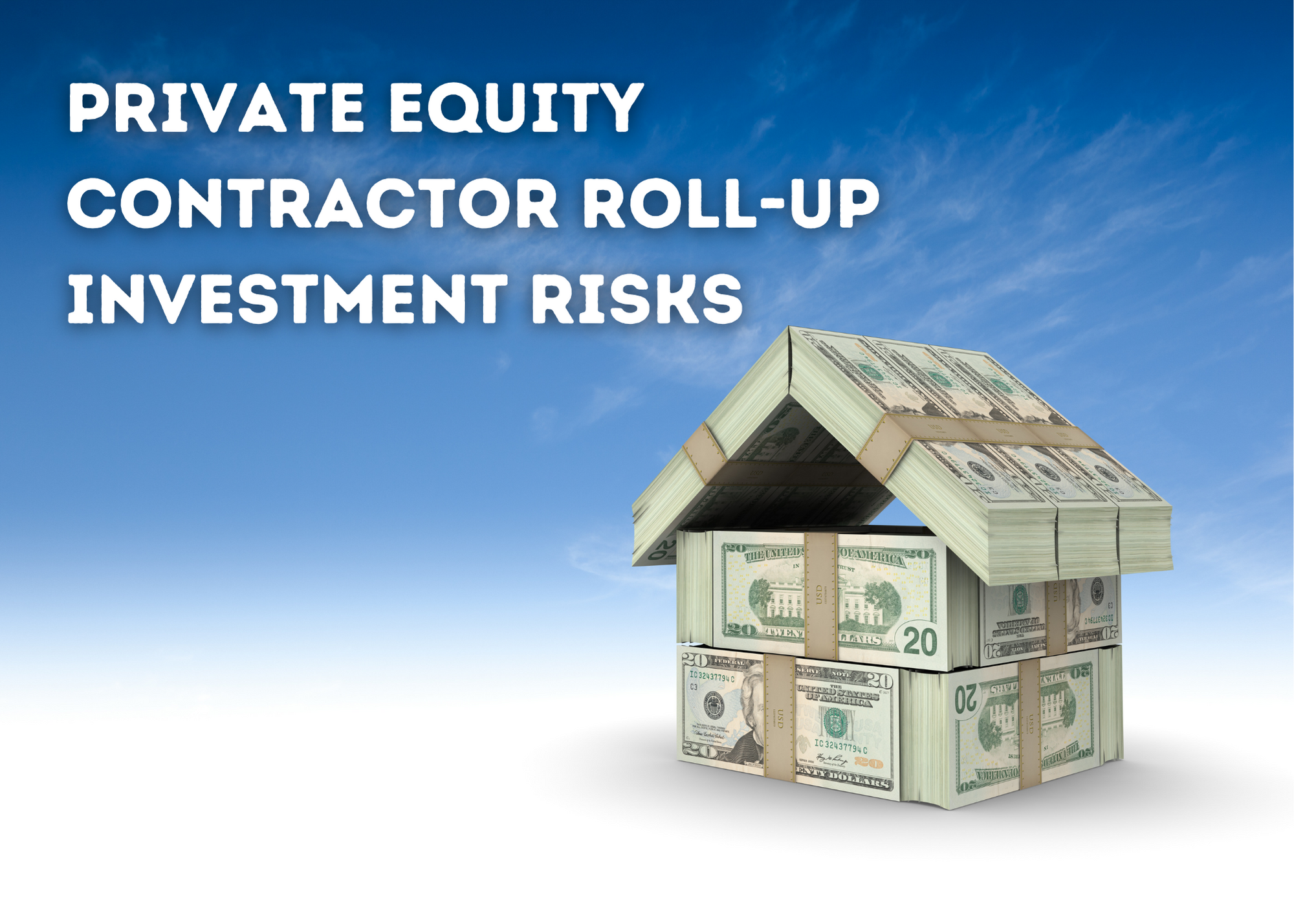
Investing in a fund whose strategy is to roll-up contractors, as well as companies complimentary to the contracting industry, can be a compelling investment for those with unique industry knowledge and who are able to access such funds. In most cases, investors are venture capital or private equity fund contributors. They are also contractor owners who have sold their business but have chosen to only monetize a portion of their sale price and leave the rest as a share of the larger fund. This might offer an even bigger monetization opportunity if the roll-up exit strategy is successful.
Despite the good intentions of all parties involved, various risks exist in roll-up strategies that investors should be mindful of such as integration difficulties, clashes of culture/ego, and execution risk:
Integration Risk
- It can be difficult to integrate the different businesses acquired and create a synergy as they will all have different systems (including IT, accounting, and business systems), management styles, and cultures. The more companies acquired, the greater the effort needed to integrate and the higher the risk of integration failure. Changes in leadership can lead to drops in morale, the departure of talent, and falls in productivity.
Profitability Reduction
- With any change of ownership, there is always risk that contractor profitability can fall. The most significant risk would be the impact of client or staff retention. Pricing mandates from the new owners might not work in the market. Sometimes the new owner overconfidently attempts to penetrate new markets without adequate research. Another trap is when funds acquire contractors with unforeseen problems with their contracts or the assets they are obligated to maintain.
Cultural Issues
- Often the rolled-up companies are run very informally with little or no corporate governance processes in place and likely have limited finance or reporting systems. Under the new structure, they will certainly be pushed to run a more formal culture with far stricter reporting requirements and control.
Bets on the Wrong Technology
- A foundational pillar of roll-up strategies are the expected efficiencies or economies of scale that may materialize by leveraging new technologies in the roll-up group. Often, these technology-dependent strategies are poorly planned at the highest levels due to errors or omissions in the selection process. This is often caused by individuals not qualified to be responsible for the decisions, unrealistic expectations, problems with implementation, and/or lack of user adoption.
Stronger Competitors from The Rush to Consolidate
- As market sectors consolidate, the number of companies in them drops. Those who hold out may have the competitive advantage by hanging back and letting the roll-ups fumble through consolidation. There may even be risk that companies may not be able to hold on to customers of a company they buy. There can be greater upside for contractors who wait and watch the industry service levels deteriorate, and then profit off the mistakes of competitors.
Roll-Ups Are Not a Sure Thing
- The idea with a roll-up strategy is to take many smaller businesses and combine them into a large one with increased purchasing power, greater brand recognition, lower capital costs, and more effective advertising. They may not work if regional regulation limits economies of scale. A national brand will have little value if local customers prefer to buy local and choose to do business based on relationships or referrals.
- Increased size may not improve the roll-up’s cost of capital. Local contractors are steady, low-risk businesses, and can borrow at low rates. The cost of acquiring and integrating the contractors at scale can actually be more expensive depending on the timing and return expectations for the fund.
- When contractors know that the investment funds are in buying mode, they expect higher prices resulting in the funds overpaying for its new investments.
Faulty Financial Engineering
- In the past few years, private equity roll-ups have started in an extraordinarily low interest rate environment. The financial models are complex and based on numerous economic and risk assumptions. Contractor roll-ups are, at their core, baskets of maintenance contract annuity streams, with risk mitigation achieved by accumulating a large number of contracts and attempting to achieve economies of scale.
What can go wrong with the financial assumptions? Mostly that the strategies often fail to account for tough times, which are inevitable. A roll-up is risky, especially if companies are purchased with debt. A decline in margins, profitability, or increases in interest rates can wreak havoc with the models. When you are considering investing in a roll-up fund, you need the fund to explain how big a hit they can withstand to unforeseen risks, which as we have seen are plentiful:
- Unexpected changes to leadership or management
- Emergence of new unforeseen competitors
- Dramatic economic events such as excessive increases in the money supply impacting interest rates
- Inflation that leads to recession
- Regulatory or political changes
- Disruptions to the supply chain, increased energy costs, unforeseen labour issues
- Black swan events such as pandemics, wars, climate events
Conclusion
The bottom line is that there is plenty that can go wrong with any investment. The bigger the numbers or the more complex the strategy, the more points of failure that need to be considered. Presumably the increased risk can also translate to very high returns.
FIELDBOSS stays current on industry trends to keep you informed on what’s happening in the service industry world. Read our blog and sign up for our newsletter for all the latest news.